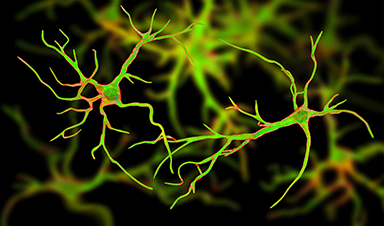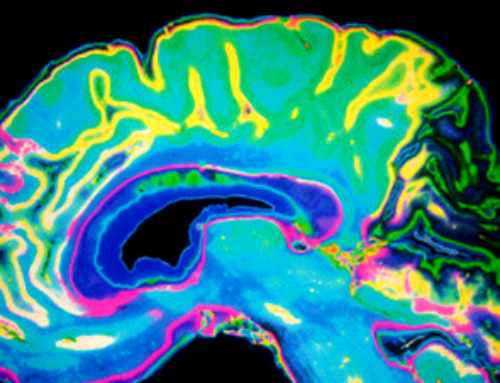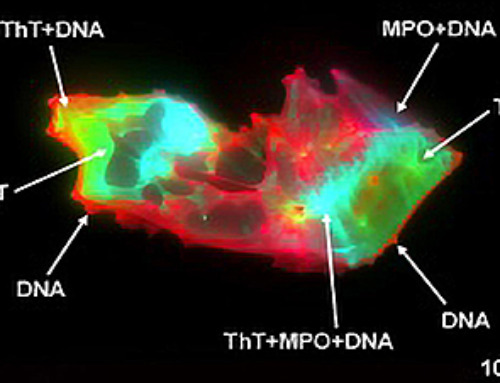Deep Nanometry (DNM) is an innovative technique combining high-speed optical detection with AI-driven noise reduction, allowing researchers to find rare nanoparticles like extracellular vesicles (EVs).
Since EVs play a role in disease detection, DNM could revolutionize early cancer diagnosis. Its applications stretch beyond healthcare, promising advances in vaccine research, and environmental science.
A Breakthrough in Nanoparticle Detection
Researchers from the University of Tokyo and beyond have developed Deep Nanometry, a cutting-edge technique that combines advanced optical technology with an AI-driven noise removal algorithm. This approach, powered by unsupervised deep learning, allows for the rapid and highly accurate detection of nanoparticles in medical samples. By identifying even trace amounts of rare particles, Deep Nanometry has demonstrated its potential for detecting extracellular vesicles — tiny biological markers that may signal early signs of colon cancer. Researchers hope this breakthrough will extend to other medical and industrial applications.
Extracellular Vesicles: Tiny Clues to Big Diseases
Your body is filled with microscopic particles even smaller than cells, including extracellular vesicles (EVs). These tiny particles play a crucial role in early disease detection and drug delivery. However, because EVs are so rare, identifying them among millions of other particles has traditionally required costly and time-consuming pre-enrichment processes. To overcome this challenge, Yuichiro Iwamoto, a postdoctoral researcher at the Research Center for Advanced Science and Technology, and his team have developed a faster, more reliable way to detect EVs — bringing us one step closer to more efficient and accessible disease diagnostics.

The Challenge of Detecting Rare Particles
"Conventional measurement techniques often have limited throughput, making it difficult to reliably detect rare particles in a short space of time," said Iwamoto. "To address this, we developed Deep Nanometry (DNM), a new nanoparticle detection device and an unsupervised deep learning noise-reduction method to boost its sensitivity. This allows for high throughput, making it possible to detect rare particles such as EVs."
At the heart of DNM is its ability to detect particles as small as 30 nanometers (billionths of a meter) in size, while also being able to detect more than 100,000 particles per second. With conventional high-speed detection tools, strong signals are detected but weak signals may be missed, while DNM is capable of catching them. This might be analogous to searching for a small boat on a turbulent ocean amidst crashing waves — it becomes much easier if the waves would dissipate leaving a calm ocean to scout for the boat. The artificial intelligence (AI) component helps in this regard, by learning the characteristics of, and thus helping filter out, the behavior of the waves.
Future Applications Beyond Medicine
This technology can be expanded to a wide range of clinical diagnoses that rely on particle detection, and it also has potential in fields such as vaccine development and environmental monitoring. Additionally, the AI-based signal denoising could be applied to electrical signals, amongst others.
"The development of DNM has been a very personal journey for me," said Iwamoto. "It is not only a scientific advancement, but also a tribute to my late mother, who inspired me to research the early detection of cancer. Our dream is to make life-saving diagnostics faster and more accessible to everyone."
Reference: "High throughput analysis of rare nanoparticles with deep-enhanced sensitivity via unsupervised denoising" by Yuichiro Iwamoto, Benjamin Salmon, Yusuke Yoshioka, Ryosuke Kojima, Alexander Krull and Sadao Ota, 20 February 2025, Nature Communications.
DOI: 10.1038/s41467-025-56812-y
News
Tiny Metal Nanodots Obliterate Cancer Cells While Largely Sparing Healthy Tissue
Scientists have developed tiny metal-oxide particles that push cancer cells past their stress limits while sparing healthy tissue. An international team led by RMIT University has developed tiny particles called nanodots, crafted from a metallic compound, [...]
Gold Nanoclusters Could Supercharge Quantum Computers
Researchers found that gold “super atoms” can behave like the atoms in top-tier quantum systems—only far easier to scale. These tiny clusters can be customized at the molecular level, offering a powerful, tunable foundation [...]
A single shot of HPV vaccine may be enough to fight cervical cancer, study finds
WASHINGTON -- A single HPV vaccination appears just as effective as two doses at preventing the viral infection that causes cervical cancer, researchers reported Wednesday. HPV, or human papillomavirus, is very common and spread [...]
New technique overcomes technological barrier in 3D brain imaging
Scientists at the Swiss Light Source SLS have succeeded in mapping a piece of brain tissue in 3D at unprecedented resolution using X-rays, non-destructively. The breakthrough overcomes a long-standing technological barrier that had limited [...]
Scientists Uncover Hidden Blood Pattern in Long COVID
Researchers found persistent microclot and NET structures in Long COVID blood that may explain long-lasting symptoms. Researchers examining Long COVID have identified a structural connection between circulating microclots and neutrophil extracellular traps (NETs). The [...]
This Cellular Trick Helps Cancer Spread, but Could Also Stop It
Groups of normal cbiells can sense far into their surroundings, helping explain cancer cell migration. Understanding this ability could lead to new ways to limit tumor spread. The tale of the princess and the [...]
New mRNA therapy targets drug-resistant pneumonia
Bacteria that multiply on surfaces are a major headache in health care when they gain a foothold on, for example, implants or in catheters. Researchers at Chalmers University of Technology in Sweden have found [...]
Current Heart Health Guidelines Are Failing To Catch a Deadly Genetic Killer
New research reveals that standard screening misses most people with a common inherited cholesterol disorder. A Mayo Clinic study reports that current genetic screening guidelines overlook most people who have familial hypercholesterolemia, an inherited disorder that [...]
Scientists Identify the Evolutionary “Purpose” of Consciousness
Summary: Researchers at Ruhr University Bochum explore why consciousness evolved and why different species developed it in distinct ways. By comparing humans with birds, they show that complex awareness may arise through different neural architectures yet [...]
Novel mRNA therapy curbs antibiotic-resistant infections in preclinical lung models
Researchers at the Icahn School of Medicine at Mount Sinai and collaborators have reported early success with a novel mRNA-based therapy designed to combat antibiotic-resistant bacteria. The findings, published in Nature Biotechnology, show that in [...]
New skin-permeable polymer delivers insulin without needles
A breakthrough zwitterionic polymer slips through the skin’s toughest barriers, carrying insulin deep into tissue and normalizing blood sugar, offering patients a painless alternative to daily injections. A recent study published in the journal Nature examines [...]
Multifunctional Nanogels: A Breakthrough in Antibacterial Strategies
Antibiotic resistance is a growing concern - from human health to crop survival. A new study successfully uses nanogels to target and almost entirely inhibit the bacteria P. Aeruginosa. Recently published in Angewandte Chemie, the study [...]
Nanoflowers rejuvenate old and damaged human cells by replacing their mitochondria
Biomedical researchers at Texas A&M University may have discovered a way to stop or even reverse the decline of cellular energy production—a finding that could have revolutionary effects across medicine. Dr. Akhilesh K. Gaharwar [...]
The Stunning New Push to Protect the Invisible 99% of Life
Scientists worldwide have joined forces to build the first-ever roadmap for conserving Earth’s vast invisible majority—microbes. Their new IUCN Specialist Group reframes conservation by elevating microbial life to the same urgency as plants and [...]
Scientists Find a Way to Help the Brain Clear Alzheimer’s Plaques Naturally
Scientists have discovered that the brain may have a built-in way to fight Alzheimer’s. By activating a protein called Sox9, researchers were able to switch on star-shaped brain cells known as astrocytes and turn them into [...]
Vision can be rebooted in adults with amblyopia, study suggests
Temporarily anesthetizing the retina briefly reverts the activity of the visual system to that observed in early development and enables growth of responses to the amblyopic eye, new research shows. In the common vision [...]





















